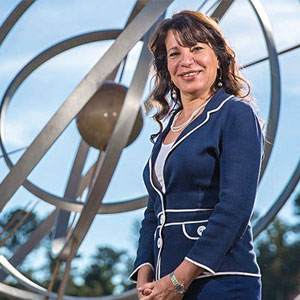THANK YOU FOR SUBSCRIBING

Procurement: Enabler or Inhibitor? Building a Culture of Enablement
Shae Howard, Director, IDG Government Technology Platforms, NSW Department of Finance


Shae Howard, Director, IDG Government Technology Platforms, NSW Department of Finance
Let’s face it, sometimes procurement functions don’t always have the best reputations. They can be perceived as unhelpfully bureaucratic and focused more on following process than on getting the right outcome—but it doesn’t have to be that way. It is important for procurement leaders to build a customer-oriented, outcome-focused team culture to enable the delivery of efficient procurement.
This may seem like a rather obvious statement to make but it can be difficult to put into practice. Developing an effective team culture is hard work but as leaders it is something we cannot shy away from. In the 3 years, I was Director of ICT Category Management for the Department of Finance, Services and Innovation in the NSW Government, I used the following focus areas to help me build a strong and robust customer-oriented team.
Hire People Who Build Long Term Relationships
While some procurement exercises can be relatively short in the public sector, most aren’t. My team were responsible for complex whole of government procurement strategies that took many months to plan, negotiate and implement. It was critical to have people on my team who could build long lasting sustainable relationships with customers, stakeholders and suppliers. When hiring, I specifically looked for people who were articulate, patient, had a genuine passion for collaboration, were outcomes-focused and, most importantly, could demonstrate how they build productive working relationships.
Create Team Values that Put the Customer at the Centre
If the ability to establish long lasting relationships is a cornerstone to building a customer-oriented culture, then a common set of values the team hold themselves accountable to is the glue that holds it together. Values help shape how a team behaves and how they work with others to deliver results. Our team started by defining our customers broadly— that is, a customer was anyone who relied on our output to do their job. Then, we placed the customer at the centre of everything we did and decided we would treat our customers the way we wanted to be treated. Our core values were trust, reliability and credibility.
Transparent decision making, fair and equitable rules for contestability and value for money must always be at the heart of procurement outcomes
Ensure the Team Understands Their Contribution
Peter Drucker may claim that culture eats strategy for breakfast but that doesn't mean we should focus on culture at the expense of strategy. Both are crucial to good customer outcomes. The key to delivering on both culture and strategy is to ensure that all individuals understand how their work contributes to the strategic work plan and how the work plan supports our customers. In my team, we had a plan on a page broken into four quadrants of work. Each quadrant contained the customer-oriented outcomes we were responsible for delivering. If an individual couldn’t see their work on the plan, we reviewed it together and made changes to either their task or the wording on the plan so there was always a direct correlation. We reviewed the plan regularly throughout the year to ensure it remained relevant.
Actively Question the Value of Current Processes
At its worst, procurement can merely be a compliance exercise to be wrestled with to stay out of trouble. If this is your customer response it provides an opportunity to look at the balance between the need for proper process and the need to get things done. Processes are meant to enable efficiency and consistency. Each step in a process needs to add value. Overly engineered processes or outdated ones create the perception that procurement is an inhibitor rather than an enabler. I actively encouraged my team to regularly review our processes and practices. The tenant “but that’s how it’s always been done” was used as a trigger for assessment rather than a reason to ignore.
I am not suggesting we do away with the core tenants of procurement in the name of being customer focussed. Transparent decision making, fair and equitable rules for contestability and value for money must always be at the heart of procurement outcomes. Our procurement processes must always reflect them. However, as procurement leaders, our job is to create a culture that proactively questions the relevancy and value of the processes and frameworks we ask our customers to use.
Lead by Example, Embrace Feedback, Learn from Mistakes
Lastly, as procurement leaders we are ultimately responsible for team direction and culture. We shouldn't underestimate the impact of our own behaviour. I made the choice to use positive energy to drive team outcomes and shape team culture. After a tough negotiation meeting or a difficult discussion, it is so easy to be frustrated, despondent or even angry. Sustaining these emotions doesn’t enable good outcomes or help build team resilience. I try to lead by example. Baggage gets left at the door. Every interaction starts with a clean slate. Possibility and positivity will always win over negativity.
I confess I don't always get it right and my team wouldn’t mind if I said they were not perfect. We are human after all. At times we have had unhappy customers. But we learnt each time this happened through customer feedback. We made the choice to embrace feedback; the good, the bad and the ugly. Without feedback, we never know if something isn’t working or how to fix it.
These five elements helped me build a customer-focused procurement team but they are not limited to procurement only. They are applicable to any business.
Weekly Brief
I agree We use cookies on this website to enhance your user experience. By clicking any link on this page you are giving your consent for us to set cookies. More info
Read Also












